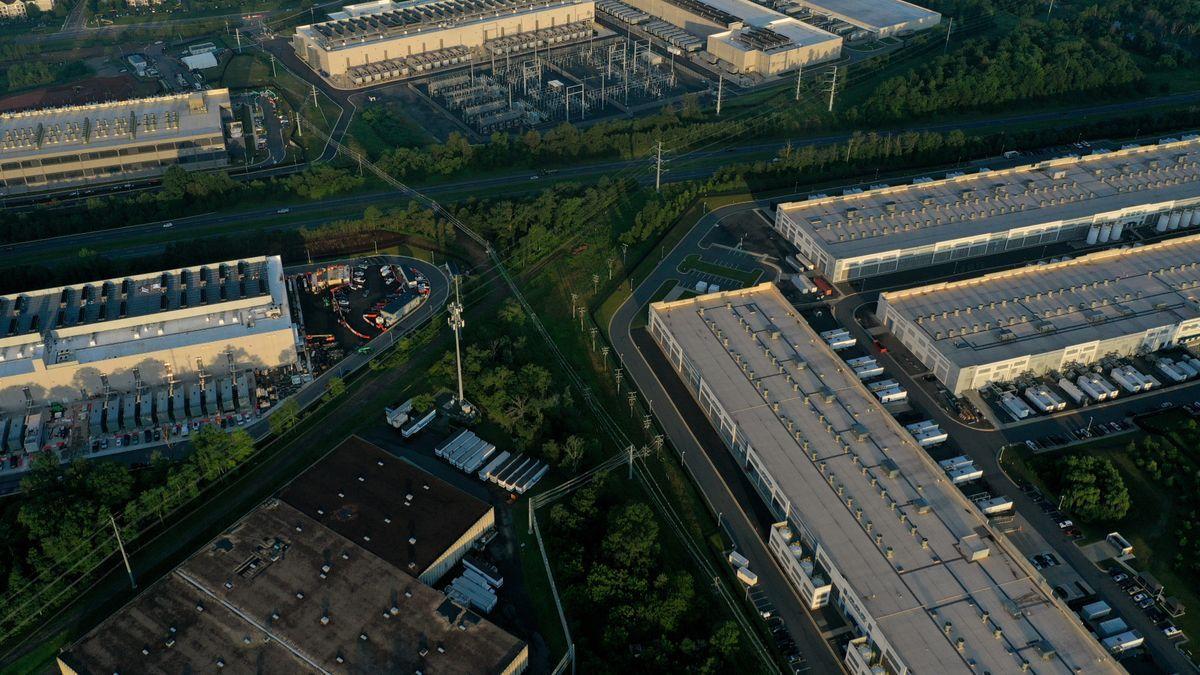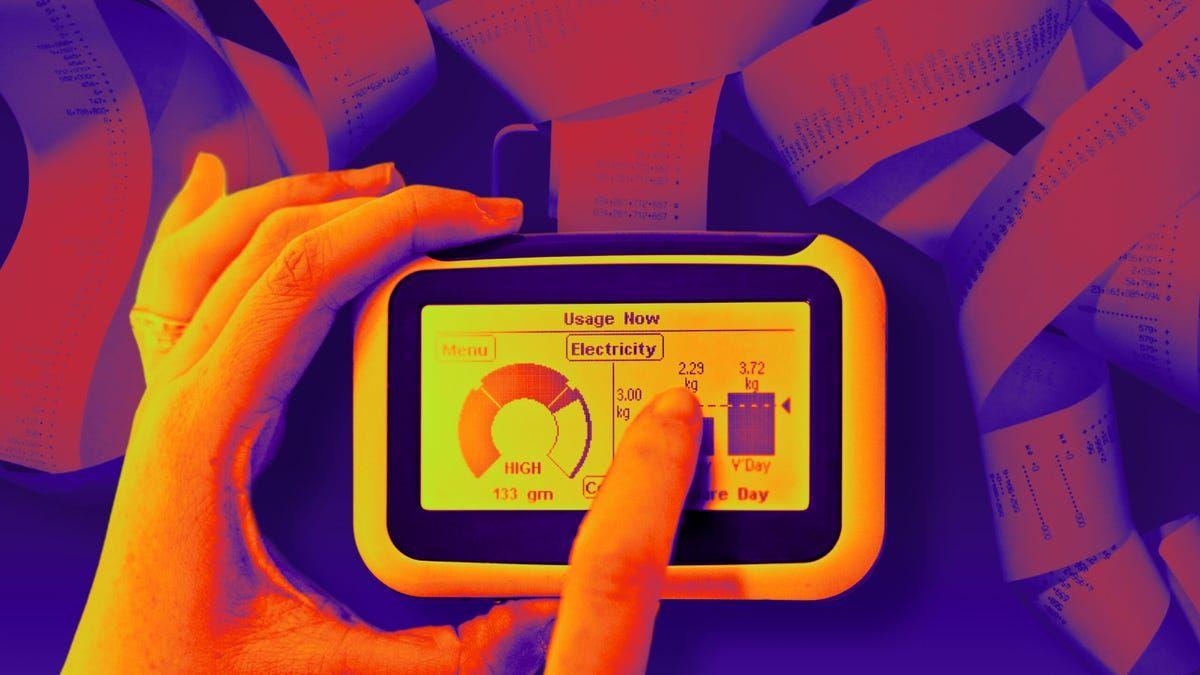AI Data Centers' Surging Energy Demand Threatens to Inflate US Electricity Bills
2 Sources
2 Sources
[1]
AI demand could drive up US electricity bills - even if it fizzles
Tech companies' artificial intelligence ambitions will require a massive expansion in electricity-hungry data centres. This surging demand risks raising electricity bills for everyone - even if some data centres are never built. US utility companies are rushing to build more power plants, transmission lines and gas pipelines to meet the rapidly growing electricity requirements of data centres. Residential electricity costs in the US have already increased nearly 30 per cent since 2021 - faster than inflation - according to a report by PowerLines, a US non-profit organisation focused on utility regulation. The past two years alone saw nationwide electricity bill increases of $10 billion each year. Now a new report commissioned by the Southern Environmental Law Center, an environmental non-profit organisation based in Virginia, warns forecasts of electricity use overestimate the demand from speculative data centre plans, which could drive utility costs even higher. In particular, developers often submit redundant requests for electrical service in multiple regions for each data centre project - before ever committing to one location. "If the projected data centre load doesn't fully materialise - which all evidence and, frankly, common sense at this point is pointing to - ratepayers will ultimately bear that economic burden of the unnecessary and underutilized gas and electric infrastructure," says Megan Gibson at the Southern Environmental Law Center. Former executives from companies like Google and Meta have themselves acknowledged the practice of making redundant requests for data centre electricity is common, the report notes. "Tech executives have said the quiet part out loud already," says Gibson. New Scientist reached out to Amazon, Google, Meta and Microsoft about their data centre development plans, but did not receive any additional comments. The inflated estimates become clearer when taking all US data centre projects announced for 2025 through 2030 into consideration. Together, they would require 90 per cent of the global chip supply - despite the US currently accounting for less than 50 per cent of global chip demand. "It would be highly unlikely that all the world's chips would go to this subset of the US," says Marie N Fagan at London Economics International, a global consulting firm headquartered in the US and Canada, whose team prepared the report. To ease the burden for ordinary ratepayers, "states must require utilities to sign contracts with potential data centre customers that put this risk on the data centres", says Ari Peskoe at Harvard Law School, who is an advisor for PowerLines. Some state governments are starting to act. On 9 July, Ohio state regulators ordered large data centre customers of Ohio's largest utility company must pay at least 85 per cent of their subscribed electricity load - even if their actual electricity consumption fell below that point. Georgia state officials also adopted a rule that aims to prevent data centre development from burdening other ratepayers. "The data centre industry is committed to paying its full cost of service for the energy it uses, including transmission costs," says Aaron Tinjum at the Data Center Coalition, an industry association based in Virginia. "It is critical to ensure fair and equitable electricity rates for all customers."
[2]
AI data centers require massive amounts of power -- making electricity more expensive for everyone around them
It's a staggering statistic: Around 70% of the world's internet traffic flows through Virginia. The state's data centers, some of which feature hallways nearly a mile long with thousands of thrumming servers on either side, make possible the billions of retail transactions, videos streams, and artificial intelligence queries that happen around the world each day. But as more data centers are built to accommodate AI and other data-intensive processes, energy demand is expected to skyrocket. A single hyperscale data center can use the same amount of energy as a large city, and the stress this is placing on local power grids is expected to drive up energy costs for residents in Virginia -- and around the country. "What we are projecting, with the contracts that are already in place, is that the energy demand in Virginia will almost double just because of AI and data centers," says João Ferreira, a regional economist who worked on a recent report about data centers by the Virginia Joint Legislative Audit and Review Commission. "That, of course, will impact all the electricity ratepayers, because we will end up paying more for electricity." This exploding demand is especially burdensome for states serviced by PJM, a regional transmission organization serving Virginia, 12 other states, and Washington, D.C. The organization, the largest of its kind in America, coordinates the movement of power from company to company and state to state. Virginia imports more energy than any other state -- 50.1 million megawatt hours, or 36% of its total energy supply, as of 2023 -- so the expansion of the state's energy needs are expected to reverberate throughout the PJM region.
Share
Share
Copy Link
The rapid expansion of AI-driven data centers is causing a significant increase in energy demand, potentially leading to higher electricity costs for all consumers, even if some planned facilities are never built.
AI's Growing Energy Appetite
The rapid expansion of artificial intelligence (AI) technologies is driving an unprecedented surge in energy demand, primarily due to the proliferation of data centers. These massive facilities, housing thousands of servers, are the backbone of our digital infrastructure and are now becoming increasingly crucial for AI operations. In Virginia alone, which handles about 70% of the world's internet traffic, energy demand is projected to nearly double solely because of AI and data centers
2
.
Source: Fast Company
The Cost to Consumers
This explosive growth in energy consumption is not without consequences. US residential electricity costs have already increased by nearly 30% since 2021, outpacing inflation
1
. The past two years have seen nationwide electricity bill increases of $10 billion annually. As utility companies rush to build more power plants, transmission lines, and gas pipelines to meet the growing demand, these costs are likely to be passed on to consumers.
Source: New Scientist
Speculative Development and Overestimation
A report commissioned by the Southern Environmental Law Center highlights a concerning trend: forecasts of electricity use may be overestimating the demand from speculative data center plans
1
. Developers often submit redundant requests for electrical service in multiple regions for each data center project before committing to a location. This practice, acknowledged by former executives from companies like Google and Meta, could lead to unnecessary infrastructure investments.Megan Gibson from the Southern Environmental Law Center warns, "If the projected data center load doesn't fully materialize - which all evidence and, frankly, common sense at this point is pointing to - ratepayers will ultimately bear that economic burden of the unnecessary and underutilized gas and electric infrastructure"
1
.The Scale of the Issue
The magnitude of the projected data center expansion becomes clear when considering all US data center projects announced for 2025 through 2030. These projects would require 90% of the global chip supply, despite the US currently accounting for less than 50% of global chip demand
1
. This discrepancy suggests that the projected growth may be unrealistic.Regional Impact and Energy Imports
The impact of this growing energy demand extends beyond individual states. Virginia, for instance, imports more energy than any other state - 50.1 million megawatt hours, or 36% of its total energy supply, as of 2023
2
. This means that the expansion of Virginia's energy needs will likely affect the entire PJM region, which includes 13 states and Washington, D.C.Related Stories
Regulatory Responses
To address these challenges, some state governments are taking action. Ohio state regulators have ordered large data center customers to pay for at least 85% of their subscribed electricity load, even if their actual consumption falls below that point
1
. Georgia has adopted similar rules to prevent data center development from burdening other ratepayers.Ari Peskoe from Harvard Law School suggests that "states must require utilities to sign contracts with potential data center customers that put this risk on the data centers" to ease the burden on ordinary ratepayers
1
.Industry Response
The data center industry, represented by organizations like the Data Center Coalition, maintains its commitment to fair practices. Aaron Tinjum from the coalition states, "The data center industry is committed to paying its full cost of service for the energy it uses, including transmission costs. It is critical to ensure fair and equitable electricity rates for all customers"
1
.As the AI industry continues to grow, balancing technological advancement with energy sustainability and consumer protection will remain a critical challenge for policymakers, utility companies, and tech giants alike.
References
Summarized by
Navi
[1]
Related Stories
US Power Grid Struggles to Keep Pace with AI Data Center Boom, While China Surges Ahead
15 Aug 2025•Business and Economy

AI Data Centers Reshape U.S. Electricity Market, Raising Concerns Over Rising Consumer Bills
09 Aug 2025•Business and Economy

AI Data Centers Spark Surge in Electricity Costs for Consumers
30 Sept 2025•Business and Economy

Recent Highlights
1
Google launches Gemini 3 Flash as default AI model, delivering speed with Pro-grade reasoning
Technology

2
OpenAI launches ChatGPT app store, opening doors for third-party developers to build AI-powered apps
Technology

3
OpenAI launches GPT Image 1.5 as AI image generator war with Google intensifies
Technology





